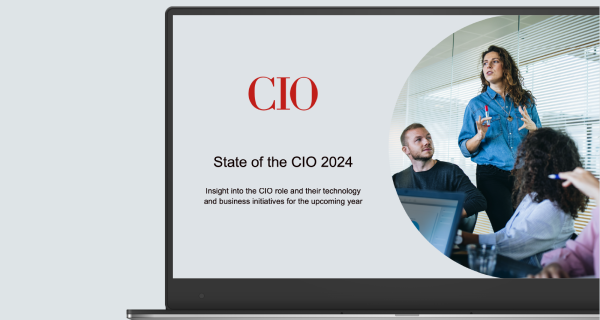There’s no doubt that AI, especially Generative AI tools, have proven effective and efficient for a whole mix of people over the past year and a half. I’ll always remember the time I got a text from my mother-in-law saying “Name of AI program please” so she could more quickly and creatively write up the lesson plans and grades for her second-grade physical education class. Whether they are being used by educators, program developers, or everyday marketers, tools such as ChatGPT established themselves as a brainstorming powerhouse, enhancing and developing new ideas and content suggestions, ultimately leading to improved productivity.
Status of AI exploration and adoption
Because of this, it’s no surprise that only 8% of IT decision-makers are not interested in Generative AI technology according to Foundry’s AI Priorities study. More specifically, this year’s State of the CIO research found that 80% of CIOs say they are tasked with researching and evaluating possible AI additions to their tech stack. Additionally, those that have technology budgets dedicated to AI show no signs of slowing down. Close to two-thirds expect their spending towards AI projects to increase this year. With 55% of tech leaders stating that Gen AI-infused products create better business outcomes and allow employees to refocus on value-adding tasks, this seems like a no-brainer.
The same enthusiasm holds true for business departments. 79% of technology content marketers report using generative AI tools according to Content Marketing Institute’s Technology Content Marketing Benchmarks, Budgets, and Trends: Outlook for 2024 research. More than half (53%) use generative AI to brainstorm new topics, 48% use the tools to write drafts, and 43% to research headlines and keywords. Fewer said they use AI to outline assignments (29%), proofread (19%), generate graphics/images (10%), and create videos (7%) and audio (7%).
Are Gen AI users moving too fast?
Does this all sound too good to be true? Maybe that’s because it is. While these solutions have clear business benefits, they also pose some risks, especially if the organization is not fully prepared to embrace the technology. In fact, 23% of IT decision-makers agree that their organization is moving too fast with respect to the use of generative AI. Of the technology marketers using gen AI tools, 88% use free tools, which means they can have their own personal accounts and create accounts without letting their IT team know.
The rapid change that resulted due to the gen AI frenzy did not allow organizations to establish a set of guidelines before everyone decided to join the movement, and even the marketing team acknowledges this. Only 26% said that their organization has a set of guidelines for their gen AI tools. When asking the IT team, 36% said that their organization has a policy and/or system in place to monitor the use of generative AI. But, close to half (46%) of organizations with more than 1,000 employees are establishing policies and guidelines to prepare for gen AI.
IT concerns marketers should be aware of
What exactly is the IT team concerned about and what should marketers take into consideration when using generative AI tools? The most pressing considerations and ethical implications they have to implementing the technology are security and cybersecurity as these systems can be vulnerable to attacks; privacy concerns around the large amounts of data required to generate accurate content; authenticity and trust as the proliferation of gen AI content challenges the authenticity of digital media; questions about intellectual property rights; and regulatory compliance to make sure the technology complies with data protection, intellectual property, and consumer protection laws.
Many of these fears come down to the system, and marketers must do their due diligence before creating a profile and entering company data into a generative AI platform. The entire point of these tools is to increase employee productivity and give time back for more high-value tasks, but if these tools lead to cyberattacks, deepfakes, or forgery, it’s game over.
Continuing to work together
The benefits of AI and gen AI are only as good as the people who use it. IT and marketing teams must work together, and the good news is that 71% of CIOs agree that they’re working more closely with lines of business on AI applications. There’s also some improvement to be made – 58% say that IT and LOB are aligned on the adoption and use of generative AI. It’s important for technology marketers to be transparent with their IT team about their desired use for the tools and explain the benefits they see out of one certain tool versus another. Ultimately IT should work with them to recommend and implement the proper systems.
Cheers to hopefully a year of gen AI success – check back next year and see how the IT and business alignment has shifted. In the meantime, explore how you can engage with AI-focused IT decision-makers through Foundry’s editorial expertise.





